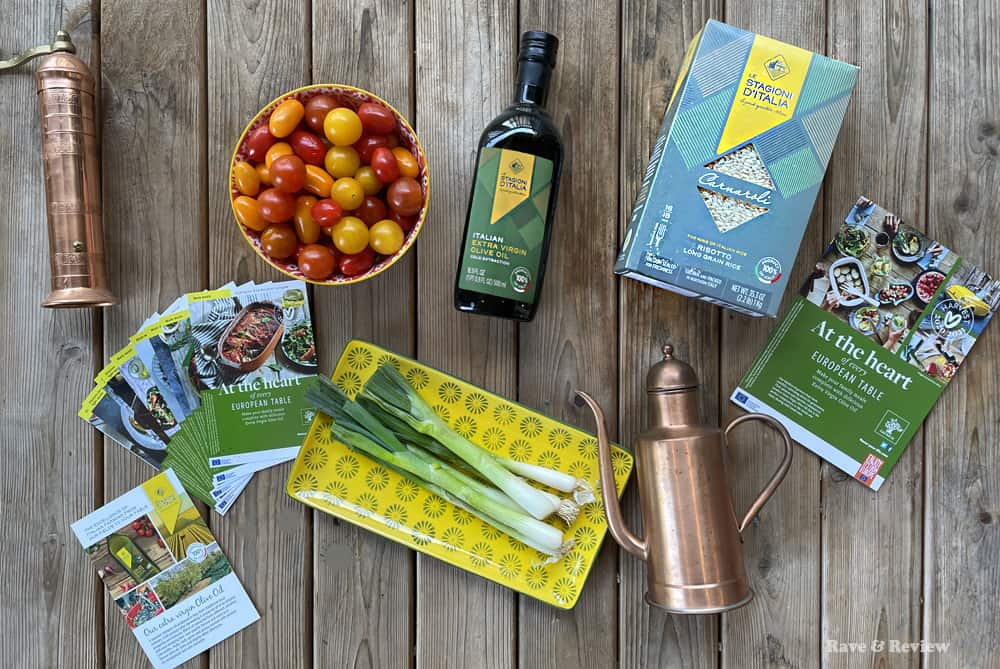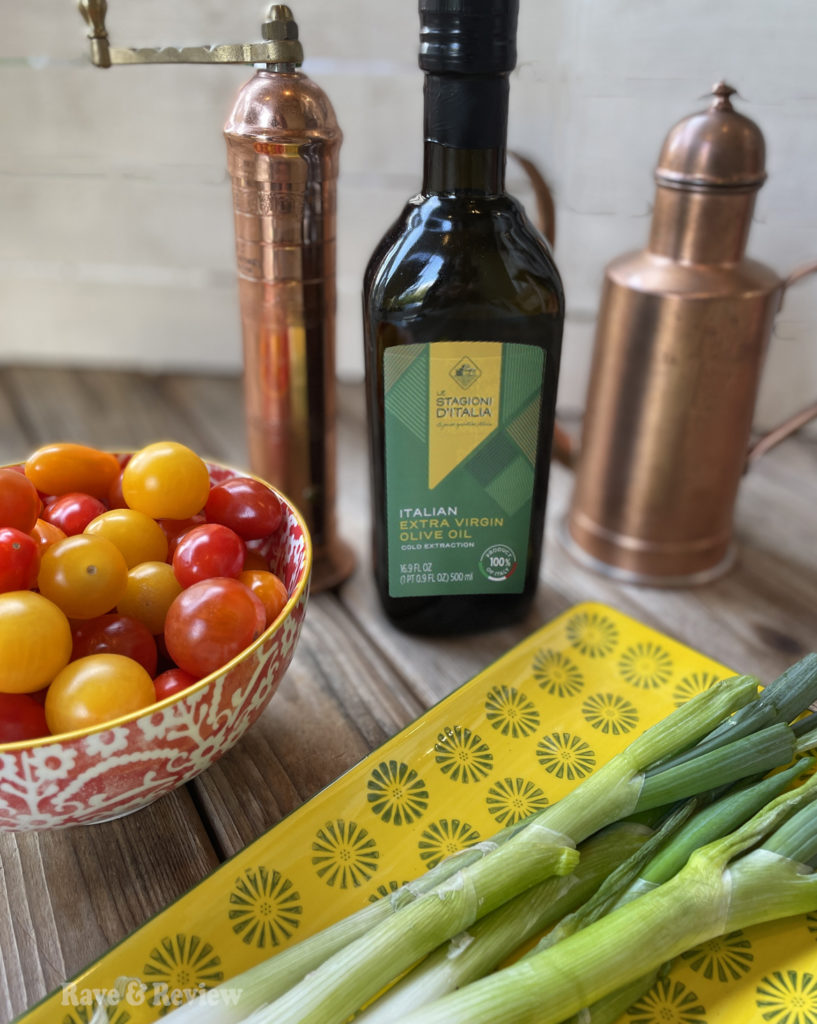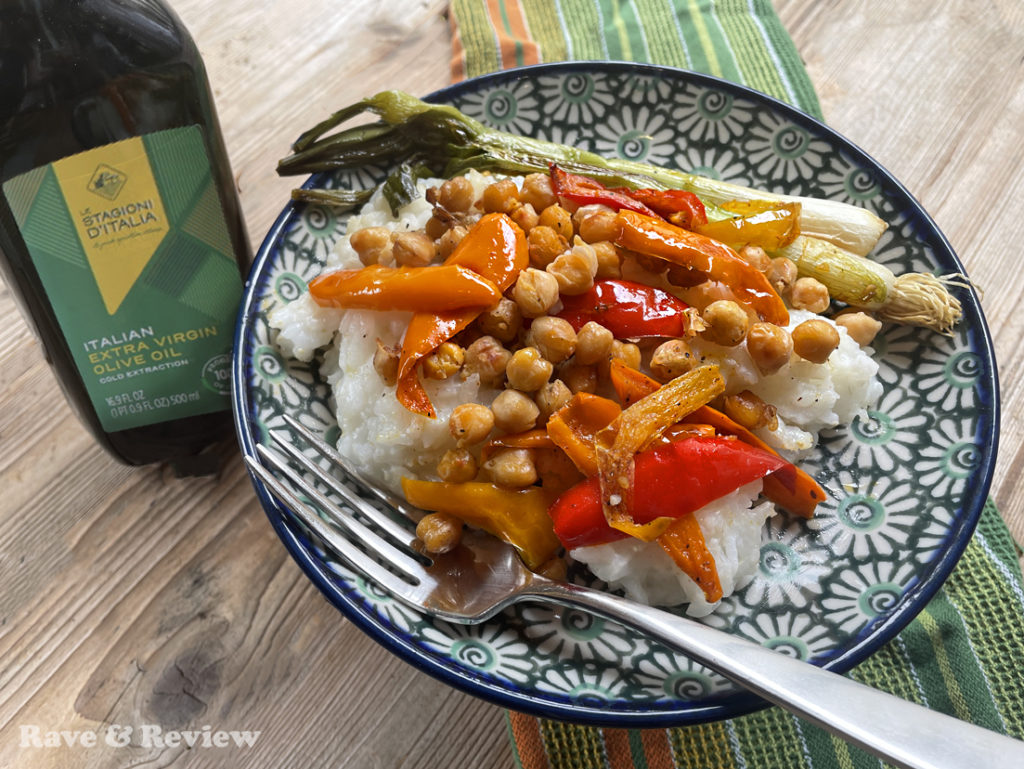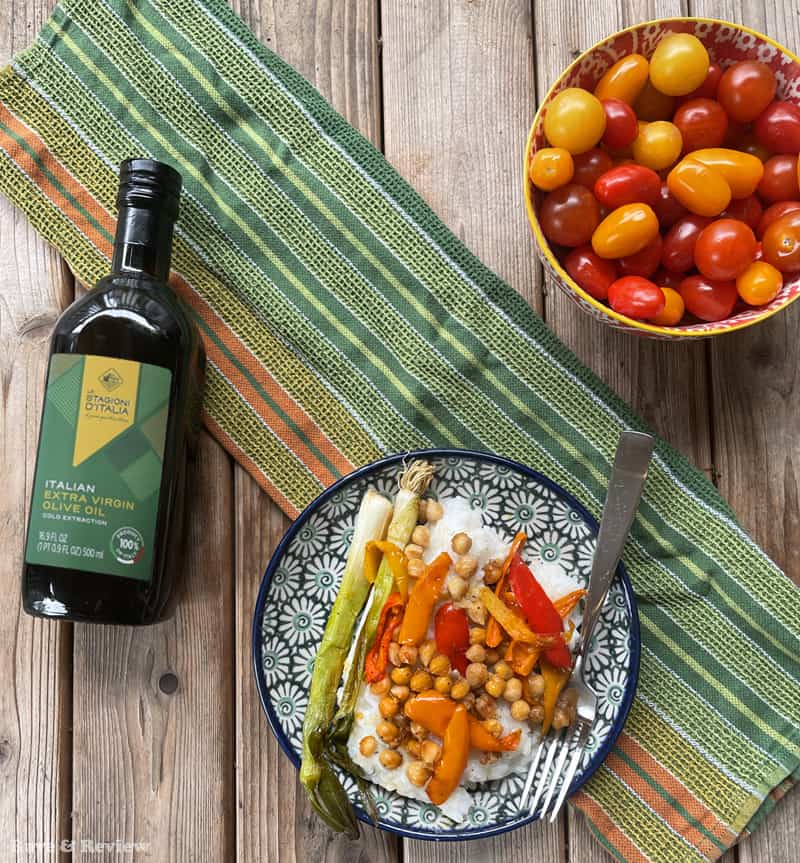
I received this product for free from Moms Meet {momsmeet.com} to use and post my honest opinions. Compensation for this post on how to Flavor Your Life with Extra Virgin Olive Oil was provided and this page may contain affiliate links.
Years ago, I thought all olive oils were basically the same, and you could pretty much buy any bottle that was on sale. And, then I watched a short documentary about olive oil and was shocked to find out that olive oils aren’t created equal. I knew I wanted Extra Virgin Olive Oil, but beyond that, I was rather lost.

Flavor Your Life with Olive Oil
That’s where the Flavor Your Life campaign comes in. Their aim is to educate North American consumers about authentic Extra Virgin Olive Oil. They want to make it easy to navigate the oil aisle at your local grocery store by debunking misconceptions and educating consumers on rich history of Extra Virgin Olive Oil.
In learning about the Flavor Your Life campaign this month, I discovered that there are thousands of different olive varieties cultivated in Europe alone. Yes, thousands. And for thousands of years, olive oil has been a way of life around the world. Many cities were designed specifically around olive groves, as they were one of the land’s most prized resources.

The farmers that grow them have created unique regional styles of oil that give a huge range of flavor profiles. The greatest impact on taste is the type of olive tree, region it’s grown in {which affects climate and soil} and the time of harvest. Europe offers a vast array of flavor profiles, so many keep a variety of oils in their pantry for different occasions.
Yes, even the month they are picked in affects the taste of the resulting olive oil. Olives harvested early in the season, usually in late August but it varies by region, are under-ripe. The under-ripe olives then produce oils that are greener, which is typically more bitter and pungent. Olives harvested at the end of the season, typically late November into December, are over-ripe and tend to taste mild and buttery.

Which kind of harvester would you be? I would most definitely be a late harvester as I love a mild and buttery olive oil for just about everything…. and also an early harvester because I love a greener taste. I guess I just like Extra Virgin Olive Oil.

What is Extra Virgin Olive Oil?
Extra Virgin Olive Oil {EVOO} is made by pressing olives without heat or chemicals. This is known as first cold pressed olive oil.
Olive oils are tested for peroxide values. Peroxide value must be below 20 milliequivalents of oxygen/kilo of oil, which indicates the amount of oxidation or aging that’s occurred as a result of exposure to oxygen, light, and heat. Lower values indicated fresher oil and more rapid processing.
Extra Virgin Olive Oil must be below 0.8%, or virtually free of acidity. This has nothing to do with the pH or taste, but the % of oleic acid {fatty acid}. Higher levels indicate improper production and rancidity.
Extra Virgin Olive Oil has a high smoking point of 400°F, so it is suitable for both cooking and baking.
A panel of expert tasters trained by the International Oil Council then test for taste defects and the presence of positive attributes of fruitiness, bitterness, and spiciness. If the oil doesn’t have the signature fruity taste and harmonious balance, it won’t earn the Extra Virgin rating.

Le Stagioni d’ Italia Extra Virgin Olive Oil
I received a bottle of Le Stagioni d’ Italia Extra Virgin Olive Oil with a box of Le Stagioni d’ Italia Carnaroli rice along with information and recipe cards for cooking and baking with Extra Virgin Olive Oil. Le Stagioni d’ Italia means “the seasons of Italy” and the name represents the connection of nature and land. Their supply chain is short and fully traceable, as well as sustainable, and the care that they take in processing creates exceptional delicious olive oils.

After learning about Flavor Your Life and Extra Virgin Olive Oil, I got a chance to recreate one of the included recipes in my blogger pack. I chose the chargrilled peppers with fennel, zucchini, and chickpeas served over the Carnaroli rice and crossed my fingers for the best since it is very much out of my regular routine. The result was not the disaster I was anticipating, and it ended up being a huge hit in my home.

My main takeaway from this experience is that I could stand to re-read recipes before jumping in to make sure I have everything I need {spoiler alert: I didn’t}. But, a more important lesson I learned in my cooking process is that no one will care that you forgot a thing or two when you’re using quality ingredients packed with flavor. Thank you, Extra Virgin Olive Oil.
How can you guarantee you have genuine Extra Virgin Olive Oil from Europe?
You can look for the European Union PDO certification {Protected Designation of Origin, also known as DOP in Italian} or PGI {Protected Geographical Indication, also known as IGP in Italian}.
PDO certified products must be produced, processed, and prepared in a specific region using traditional production methods and they must have the sensorial qualities attributed to that region. PGI is less strict and certifies that one stage of the process occurred in a specific region. Third party authorities constantly monitor these certifications for authenticity.

Tips for using Extra Virgin Olive Oil
- Experiment with different oils for different occasions.
- Use delicate oils for salad dressings or as a condiment over mild foods, like vegetables, fish, eggs or potatoes.
- Pair robust oils with hearty foods that can stand up to the intense flavor, like steak or spicy soup.
- Since it has a high smoking point, Extra Virgin Olive Oil is suitable for cooking and can also enhance any dish by drizzling on as a finisher.
- Store oil in a dark cool pantry away from heat and light, which will help keep it fresh longer.
- 57°F is the best temperature for storing. Despite what you’ve been led to believe, it is not advisable to store your oil next to the stove.
- Make sure the cap is screwed on tight after each use in order to protect it from air.
- To ensure freshness, consume oil within 6 months from opening.
Learn more about how to Flavor Your Life with Extra Virgin Olive Oil here.
